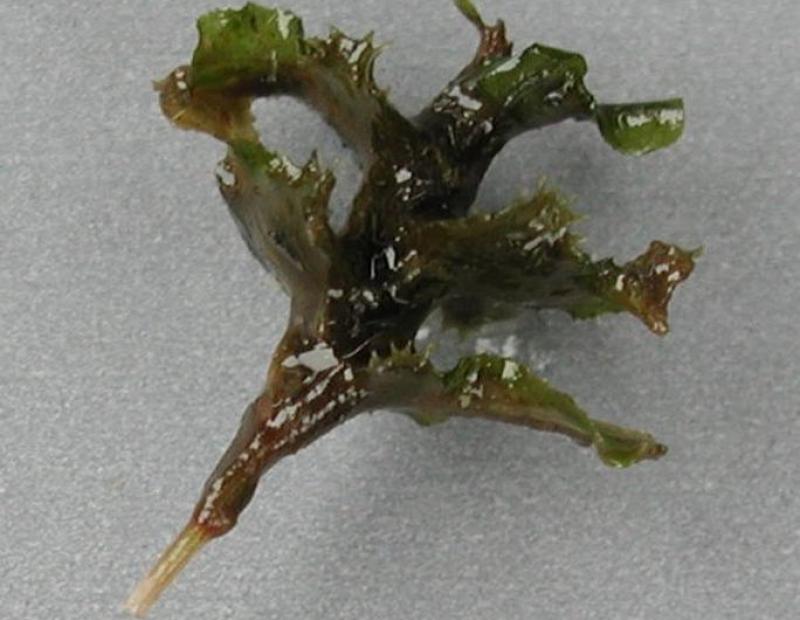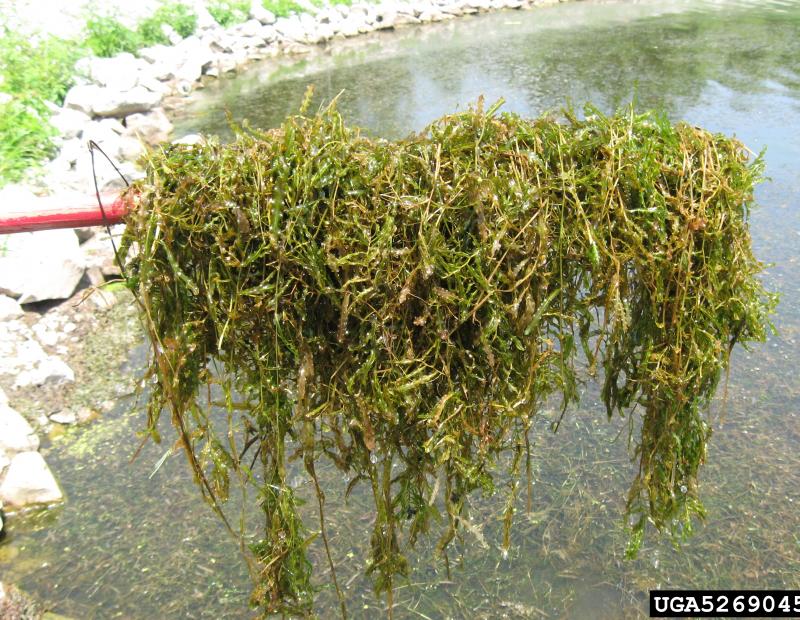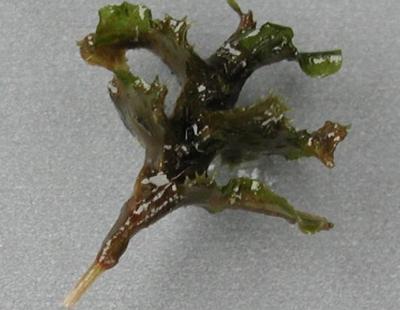- Aquatic Invasives
- Plants
Curly-leaved pondweed grows in a variety of water conditions, and can be seen growing in lakes, ponds, rivers, streams and salt marshes. It is fairly tolerant of brackish water as well as fresh water. Although it thrives best in nutrient-dense and alkaline waters, it competes with native plants under other water conditions as well. These plants tend to form dense mats to the surface of the water, frequently inhibiting growth of native plants. Along with impacting native plant growth, these mats can be detrimental to recreation, by interfering with boats and other water sports. Because their germination occurs in the fall, they overwinter under ice and become one of the first plants to grow in the spring, giving them distinct advantage and more resources. During the summer, when the plants die off, the excess decaying organic matter makes the water extremely eutrophic, also potentially causing detrimental algal blooms.
Curly-leaved pondweed is native to north Africa, India, the Middle East, Australia and much of Europe. It was introduced into the United States around the 1880's and has since been reported in all but four states. It was likely introduced into the U.S. accidentally with fish hatchery stock as well as through aquarium trade. Multiple points indicate it spread from multiple points of introduction.
Curly-leaved pondweed is an aquatic perennial that reaches between 1 and 2.5 ft. in length. The plant has flat stems, and spindle-shaped 1-inch buds that are found terminal or axillary. The leaves are characteristically linear-oblong, 1-3 inches long, around .5 inches wide and are arranged spirally along the stem. This plant flowers and fruits in late spring to early summer, but then dies leaving fruit and turions to generate new plants in the late summer and early fall.









